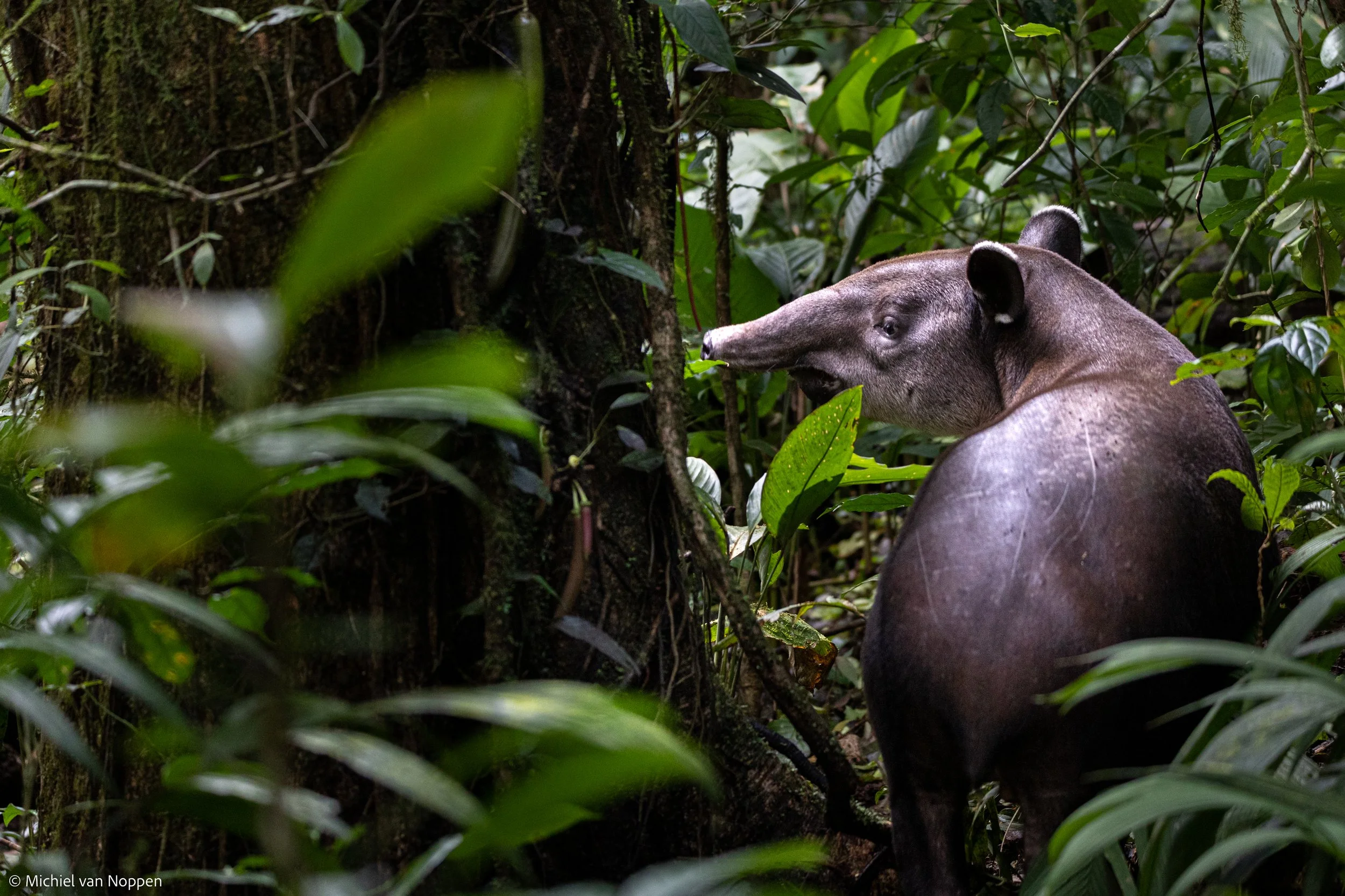A symbioses between the largest mammal of Mesoamerica and an endemic tree
Wherever live tapirs, lives hope for tropical forests. This hope comes as a lovely package full of the seeds and nutrients that are key for maintaining and restoring tropical forests. The package is commonly known as dung. Fantastic dung, I would add. Tapirs, the architects of the forests, help spread necessary nutrients to keep forests alive – just by eating, and pooping.
And while Tapirs help keep forests alive and well around the world, their dung holds special value in the Guanacaste Mountain Range of Costa Rica. In these mountains, the survival of the rare, endemic, and endangered Jicaro Danto trees (Parmentiera valerii) depend on Tapirs – so much, that the tree has evolved to seduce tapirs, growing sweet, cucumber-shaped fruit called “jicaro” or “cacho” from its trunks, a real treat for tapirs.
A tapir searching for fallen fruit
Tapirs are the only herbivore capable of smashing the fruit’s hard shell and reaching the soft core, where small, heart-shaped seeds await ingestion. This reward not only provides energy and nutrients to tapirs, but also allows these little hearts to be processed and delivered kilometers away from the parental tree.
A researcher points out a jicaro danto seed
“Unfortunately, this “lovely symbiosis” is in danger; both tapirs and jicaros are listed as endangered with declining populations on the IUCN Red List. We need to protect tapirs to save the Jicaro Danto, at the same time we need to restore Jicaro Danto populations to save the tapirs throughout the Guanacaste Mountain Range.
”
“Being ingested by tapirs increases the seed chances to germinate and grow. In other words, tapirs are literally spreading love!”
Jicaro danto seeds on the tree
Nai Conservation, part of the Costa Rica Wildlife foundation is also fitting GPS collars on tapirs, tracking their movements, investigating their habitat range, and their routes along the jicaro danto trees
This Tapir, made its home in Hacienda Montezuma. Hacienda Montezuma was once part of the United Fruit Company and a major supplier of the export of coffee, dairy and fruit in the Caribbean railroads in the late 1800s. Over a century later, a wealth of natural resources and a unique biological corridor is discovered, a chance to breathe life into the wealth of flora and fauna that inhabit the Guanacaste region. A new purpose was born. Montezuma now protects over 1,500 acres of microclimates, cultivating a lush environment for the cattle to roam and a natural sanctuary for monkeys, sloths, anteaters, ocelots, pumas and the endangered tapir.








